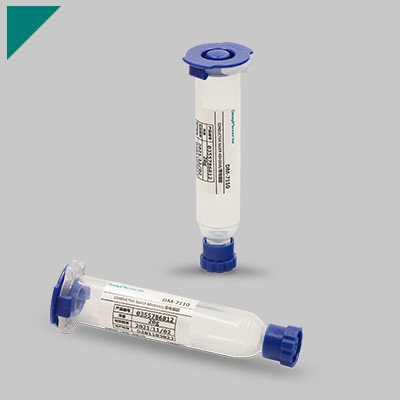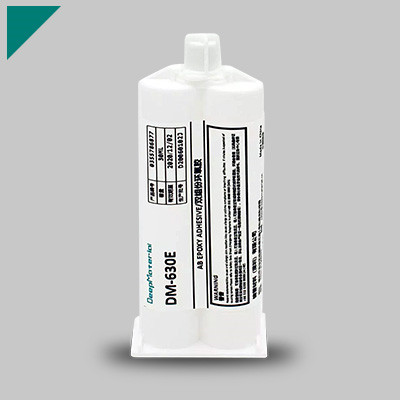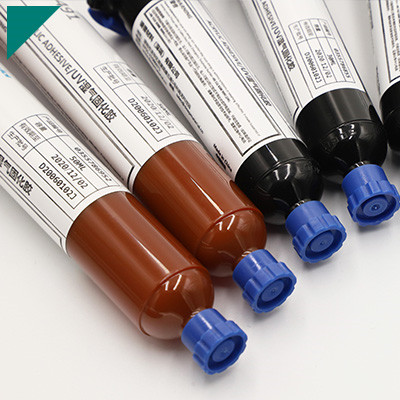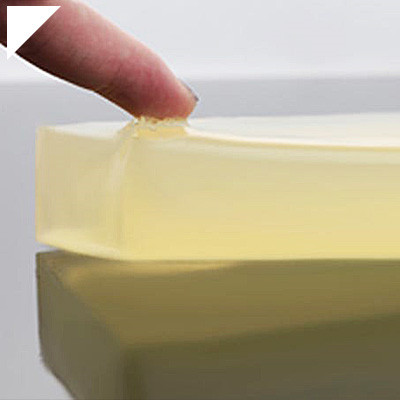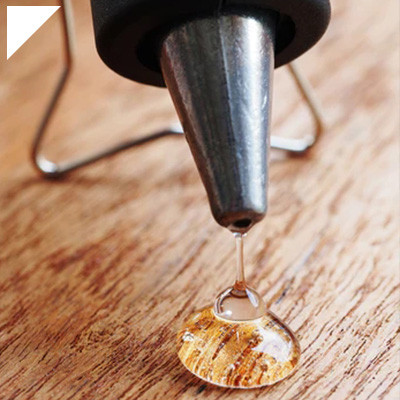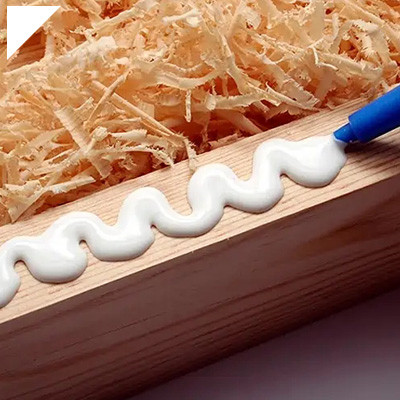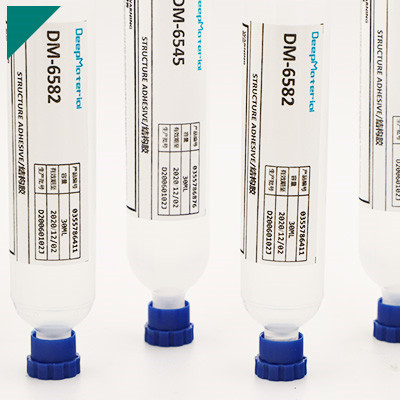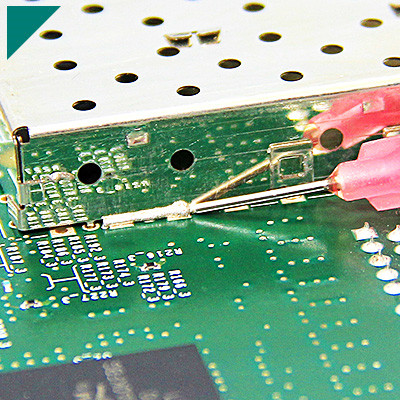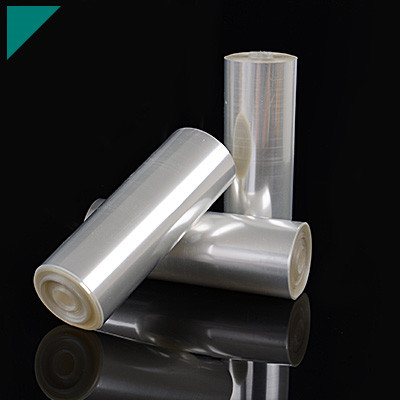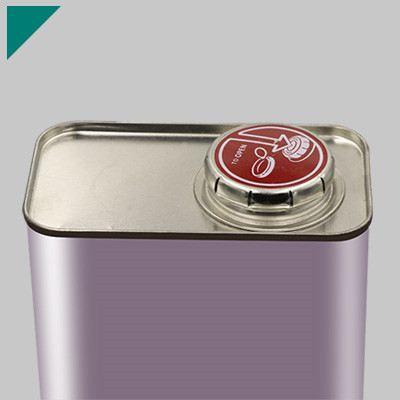What is the meaning of potting material

Unveiling the Meaning of Potting Material
Potting material is crucial in various industries, from electronics to gardening. Understanding its significance is vital for anyone involved in manufacturing, engineering, or even gardening projects. This comprehensive guide delves into the essence of potting material, exploring its definition, types, applications, and importance.
Table of Contents
ToggleWhat is potting material?
Potting material, or potting compound or encapsulant, is used in electronics and electrical applications to encapsulate or protect delicate components, such as integrated circuits (ICs), semiconductors, sensors, and other electronic devices. It is a protective coating that shields these components from environmental factors such as moisture, dust, vibrations, and thermal shock, enhancing their durability, reliability, and longevity.
The primary function of potting material is to provide electrical insulation and mechanical support to the encapsulated components. Surrounding the device forms a barrier that prevents moisture and other contaminants from reaching the sensitive electronic parts, which could otherwise cause corrosion, short circuits, or other malfunctions.
Potting materials come in various forms, including liquid, gel, and solid formulations, each tailored to specific application requirements. Liquid potting compounds are commonly used for applications involving complex shapes or where conformal coating is needed to cover irregular surfaces. These compounds are typically poured or dispensed onto the electronic assembly and then allowed to cure, forming a solid protective layer.
Gel potting materials offer a flexible and resilient encapsulation solution, ideal for applications where shock absorption or vibration damping is necessary. They maintain consistency even after curing, providing excellent cushioning and protection against mechanical stresses.
On the other hand, solid potting compounds are pre-formed into sheets or blocks and then applied to the electronic components either by molding or encapsulating them within the solid material. Solid potting materials offer superior protection against physical damage and are often used in harsh environments or high-stress applications.
The selection of potting material depends on various factors such as the application requirements, operating conditions, desired level of protection, and compatibility with the encapsulated components. Factors such as thermal conductivity, chemical resistance, and cure time also play a crucial role in determining the suitability of the potting compound for a particular application.
Potting material serves as a vital protective barrier for electronic components, safeguarding them against environmental hazards and ensuring the reliable performance of electronic devices in diverse operating conditions.
How is potting material defined in the context of electronics?
Potting material, in the context of electronics, refers to a compound used to encapsulate or encase electronic components, circuits, or assemblies. Its primary function is to protect these components from environmental factors such as moisture, dust, vibrations, and mechanical stress, thereby enhancing their reliability and longevity.
Potting materials are typically formulated from various polymers, resins, or epoxies, which undergo curing processes to form a solid, protective enclosure around the electronics. These materials are chosen based on their compatibility with the specific application requirements, including thermal conductivity, electrical insulation properties, flexibility, and resistance to chemicals and temperature extremes.
One common type of potting material is epoxy resin. Epoxy resins offer excellent adhesion to various substrates, high chemical resistance, and good electrical insulation properties. They are widely used in applications where robust protection against moisture and mechanical damage is required, such as in outdoor electronics, automotive electronics, and marine environments.
Silicone rubber is another popular choice for potting material due to its superior flexibility, thermal stability, and resistance to extreme temperatures. Silicone potting compounds provide adequate protection against moisture and thermal cycling, making them suitable for applications subjected to wide temperature variations.
Polyurethane potting compounds offer exceptional toughness and abrasion resistance, making them ideal for rugged applications such as industrial electronics and aerospace systems. They also provide good electrical insulation properties and can withstand exposure to harsh chemicals and solvents.
Potting material plays a crucial role in safeguarding electronic components and assemblies from environmental hazards, ensuring their reliable operation over an extended lifespan. By selecting the appropriate potting material and encapsulation technique, electronics manufacturers can enhance the durability and performance of their products in diverse operating conditions.
What are the critical components of potting material?
Potting material, commonly used in electronics and electrical applications, encapsulates and protects sensitive components from environmental factors such as moisture, dust, vibrations, and thermal stresses. It also provides mechanical support and electrical insulation. Critical components of potting material include:
- Resin: Resins are the primary matrix material in potting compounds. Common types include epoxy, polyurethane, silicone, and acrylic resins. Each type offers chemical resistance, flexibility, or thermal conductivity properties.
- Hardener/Curing Agent: Resins typically require a hardener or curing agent to initiate the polymerization process, forming a solid material. The choice of hardener influences the potting material’s curing time, strength, and other mechanical properties.
- Fillers: Fillers are added to potting compounds to modify their properties. Joint fillers include silica, glass fibers, ceramics, and metals. Fillers can enhance thermal conductivity, mechanical strength, and flame resistance and reduce shrinkage during curing.
- Plasticizers: Plasticizers improve the flexibility and elongation of potting materials, making them less brittle and more resistant to cracking under stress. They are instrumental in applications where the material may experience significant mechanical strain.
- Adhesion Promoters: Adhesion promoters are compounds added to improve the bond between the potting material and substrate surfaces. They enhance adhesion by promoting chemical or mechanical bonding, ensuring reliable components encapsulation.
- Flame Retardants: In applications where fire safety is crucial, flame retardants are added to potting compounds to reduce the material’s flammability and slow down the spread of flames. Common flame retardants include phosphorus-based compounds, halogenated compounds, and mineral fillers.
- Antioxidants and UV Stabilizers: These additives protect potting materials from degradation caused by exposure to oxygen, heat, and ultraviolet (UV) radiation, prolonging their service life and maintaining their mechanical and electrical properties over time.
- Colorants: Colorants are optional additives used to distinguish different formulations of potting materials or for aesthetic purposes. They can be organic or inorganic pigments compatible with the resin system.
By carefully selecting and combining these components, manufacturers can tailor potting materials to meet specific application performance requirements.
Are there different types of potting materials available?
Potting materials are essential components in various industries, particularly in horticulture, electronics, and manufacturing. They encapsulate or embed items for protection, insulation, or structural support. These materials come in a variety of types, each tailored to specific applications.
- Epoxy Resins: These are widely used in electronics and electrical applications due to their excellent insulation properties and high resistance to chemicals and moisture. Epoxy resins provide strong adhesion and can be formulated for different curing times and thermal conductivity.
- Silicone: Silicone-based potting materials are known for their flexibility, heat resistance, and weatherability. They are often used in outdoor applications or environments where extreme temperatures are a concern. Silicone potting materials are also electrically insulating.
- Polyurethane: Polyurethane potting compounds offer a balance of flexibility and rigidity, making them suitable for applications where shock absorption and vibration dampening are required. They provide good resistance to abrasion and chemicals.
- Acrylics: Acrylic potting compounds are valued for their transparency, making them suitable for applications where the visibility of components is necessary. They offer good adhesion and resistance to moisture and thermal cycling.
- Thermoplastics: Thermoplastic materials such as polyethylene, polypropylene, and PVC can also be used for potting applications, especially in cases where reworkability or recyclability is essential. They can be melted and reshaped, making them suitable for specific manufacturing processes.
- Casting Resins: These are often used for decorative or artistic applications, such as embedding objects in clear resin for aesthetic purposes. Casting resins come in various formulations with different curing times and viscosities.
- Rubber Compounds: Rubber potting materials offer excellent flexibility and shock absorption, making them ideal for applications where mechanical stress is a concern. They provide good resistance to environmental factors such as moisture and UV exposure.
- Ceramics: In some specialized applications, ceramics are used as potting materials due to their high thermal conductivity and resistance to harsh environments. They are often employed in high-temperature applications or where exceptional durability is required.
These are just a few examples of the diverse range of potting materials available. Each offers unique properties suited to specific applications and industries. Choosing the right potting material is crucial to ensuring the optimal performance and longevity of the encapsulated components.
How does potting material differ from encapsulation material?
Potting and encapsulation materials are used in electronics and engineering applications to protect sensitive components from environmental factors such as moisture, vibration, and shock. While they serve similar purposes, their application methods, properties, and uses differ.
Potting material is typically a liquid or semi-liquid compound poured or injected into an enclosure or housing to completely surround and encapsulate the component or assembly. It cures or solidifies to form a solid mass, providing mechanical support and environmental protection. Potting materials are often made of epoxy resins, polyurethanes, silicones, or other polymers. They offer excellent adhesion, thermal conductivity, and chemical resistance, making them suitable for various electronics, automotive, aerospace, and marine applications. Potting materials benefit applications where components are subjected to harsh environmental conditions or must be protected from physical damage.
On the other hand, encapsulation material is a protective coating or layer applied directly onto the surface of the component or assembly. Encapsulation materials can be conformal coatings, resins, or coatings sprayed, brushed, or dipped onto the substrate. Unlike potting, encapsulation doesn’t surround the component; instead, it forms a thin protective layer over its surface. Encapsulation materials protect against moisture, corrosion, and other environmental factors while maintaining flexibility and allowing for thermal expansion and contraction. They are commonly used in printed circuit boards (PCBs), electronic components, and sensors.
Potting material completely encloses the component within a solid mass, while encapsulation material forms a protective layer over the component’s surface. Potting materials offer robust protection and mechanical support, while encapsulation materials provide targeted protection and flexibility. The choice between potting and encapsulation depends on factors such as the level of security required, application complexity, and cost considerations.
What are the primary functions of potting material?
Potting materials play a crucial role in various industries, particularly in electronics and engineering, where they are utilized for encapsulating or potting electronic components and devices. The primary functions of potting materials can be summarized as follows:
- Protection from Environmental Factors:Potting materials act as a barrier, shielding electronic components from environmental factors such as moisture, dust, chemicals, and temperature variations. Potting materials ensure their longevity and reliability in harsh operating conditions by encapsulating sensitive components.
- Mechanical Support:Potting materials support fragile electronic components, preventing damage from vibration, shock, and physical impact. This support is especially critical in applications subjected to transportation or rugged environments where components may experience mechanical stress.
- Insulation and Dielectric Properties:Potting materials often exhibit excellent insulation properties, effectively isolating electrical components and external conductive elements from each other. This insulation helps prevent short circuits and electrical interference, ensuring the proper functioning of electronic devices.
- Thermal Management:Some potting materials are designed to dissipate heat efficiently, helping to manage the thermal characteristics of electronic components. By conducting heat away from sensitive parts and distributing it evenly, these materials contribute to the device’s overall thermal stability and performance.
- Chemical Compatibility:Potting materials are selected based on their compatibility with the specific chemicals and substances in the environment where the device will operate. This ensures that the encapsulated components remain unaffected by potentially corrosive or reactive substances, enhancing the device’s reliability and lifespan.
- Ease of Application:Potting materials are formulated to facilitate easy application and curing processes. They may be available in various forms, such as liquid resins, pastes, or pre-molded shapes, allowing for flexibility in manufacturing processes while ensuring uniform encapsulation of components.
- Adhesion and Bonding:Potting materials adhere firmly to the surfaces of electronic components and enclosures, creating a strong bond that prevents contaminants’ ingress and maintains the encapsulated assembly’s integrity.
Overall, potting materials play a critical role in enhancing electronic devices’ reliability, durability, and performance by providing protection, support, insulation, thermal management, chemical compatibility, ease of application, and strong adhesion. Their selection and application are crucial considerations in designing and manufacturing electronic assemblies for various industries.
Can potting material enhance the durability of electronic devices?
Potting material enhances the durability of electronic devices by protecting various environmental factors such as moisture, dust, vibrations, and thermal shocks. Potting involves encapsulating electronic components or assemblies in a compound such as epoxy resin, silicone, or polyurethane. Here’s how potting material contributes to durability:
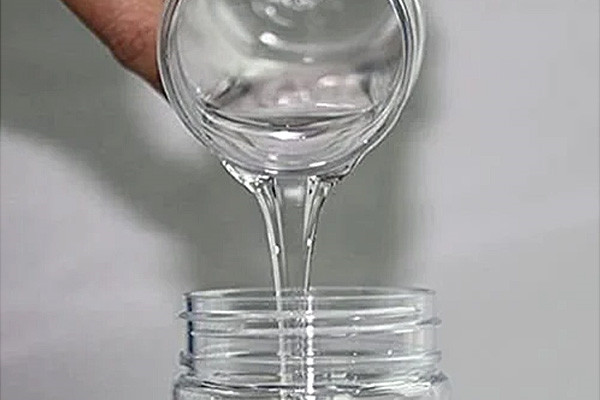
- Moisture and Corrosion Resistance: Potting materials form a barrier that prevents moisture ingress, which can cause corrosion and short circuits in electronic devices. This is particularly crucial in outdoor or harsh environments where exposure to moisture is a constant threat.
- Mechanical Protection: Potting material acts as a shock absorber, dampening mechanical stresses caused by vibrations, impacts, or rough handling. This protects delicate electronic components from physical damage and extends lifespan.
- Thermal Management: Some potting materials offer excellent thermal conductivity, dissipating heat generated by electronic components. Effective heat dissipation helps prevent overheating, which can degrade performance and reduce the lifespan of electronic devices.
- Electrical Insulation: Potting compounds provide insulation, avoiding short circuits and electrical leakage. This is vital for maintaining the integrity and reliability of electronic circuits, especially in high-voltage applications.
- Chemical Resistance: Potting materials can resist exposure to various chemicals, including solvents and oils, which could otherwise degrade the device’s components. This makes them suitable for use in industrial settings or applications where exposure to harsh chemicals is every day.
- Environmental Protection: By sealing electronic components within a protective enclosure, potting material shields them from dust, dirt, and other contaminants that could compromise their performance or functionality.
- Long-Term Stability: Properly selected and applied potting materials can enhance the long-term stability of electronic devices by preventing the degradation of internal components due to environmental factors. This ensures consistent performance and reliability over the device’s operational lifespan.
Potting material plays a crucial role in enhancing the durability of electronic devices by protecting against moisture, mechanical stresses, heat, chemicals, and other environmental factors. By encapsulating and sealing electronic components, potting materials help extend the lifespan and reliability of electronic devices, making them suitable for a wide range of applications in diverse environments.
How does potting material protect electronic components?
Potting material protects electronic components by encapsulating them within a durable and protective enclosure, typically made of compounds such as epoxy resin, silicone, or polyurethane. This encapsulation offers several fundamental protective mechanisms:
- Moisture Barrier: One of the primary functions of potting material is to create a barrier against moisture ingress. Moisture can corrode metal contacts, degrade insulation, and cause short circuits in electronic components. By sealing the components within a waterproof enclosure, potting material prevents moisture from penetrating and damaging sensitive electronics.
- Mechanical Shock Absorption: Potting material acts as a shock absorber, cushioning electronic components against mechanical stresses such as vibrations, impacts, and rough handling. This is particularly important in applications subjected to physical shocks, such as automotive electronics or portable devices.
- Thermal Management: Some potting materials possess excellent thermal conductivity, effectively dissipating heat generated by electronic components. By transferring heat away from sensitive components and dispersing it into the surrounding environment, potting material helps prevent overheating and thermal damage.
- Electrical Insulation: Potting material provides electrical insulation, isolating electronic components from each other and external conductive materials. This prevents short circuits and electrical leakage, ensuring electronic devices’ safe and reliable operation, especially in high-voltage applications.
- Chemical Resistance: Many potting materials resist various chemicals, including solvents, oils, and corrosive substances. This chemical resistance protects electronic components from degradation when exposed to harsh environments or chemical contaminants.
- Environmental Protection: By encapsulating electronic components in a protective enclosure, potting material shields them from environmental pollutants such as dust, dirt, and debris. This helps maintain the cleanliness and operational integrity of the components, even in challenging operating conditions.
Potting material protects electronic components by creating a robust barrier against moisture, providing mechanical shock absorption, facilitating thermal management, offering electrical insulation, resisting chemical corrosion, and safeguarding against environmental contaminants. These protective mechanisms help enhance electronic devices’ durability, reliability, and longevity across a wide range of applications and operating environments.
What considerations should be made when selecting potting material for electronic applications?
Selecting the appropriate potting material for electronic applications is crucial for ensuring electronic devices’ longevity, reliability, and performance. Several key considerations should be taken into account:
- Electrical Insulation: Potting materials must provide excellent insulation to protect components from short circuits and electrical leakage. High dielectric strength prevents voltage breakdown and maintains proper electronic functioning.
- Thermal Conductivity: Effective heat dissipation is critical for maintaining the temperature of electronic components within safe operating limits. Potting materials with high thermal conductivity facilitate efficient heat transfer, preventing overheating and prolonging the device’s lifespan.
- Chemical Compatibility: Potting materials should be compatible with the components and environmental conditions they encounter. To ensure long-term reliability, they must resist degradation from exposure to moisture, chemicals, solvents, and other contaminants in the operating environment.
- Mechanical Strength: Potting compounds must provide adequate mechanical support to protect delicate electronic components from physical shock, vibration, and mechanical stress. They should maintain their structural integrity under varying conditions to prevent damage to the encapsulated electronics.
- Adhesion Properties: Strong adhesion to substrates is necessary to securely bond the potting material to the electronic assembly and avoid delamination or separation over time. Proper adhesion ensures the stability and reliability of the encapsulated components.
- Environmental Considerations: Factors such as temperature extremes, humidity levels, UV exposure, and outdoor conditions must be considered when selecting potting materials. Choosing materials with appropriate resistance to environmental factors ensures the durability and performance of the electronics in diverse operating environments.
- Process Compatibility: Potting materials should be compatible with the manufacturing processes involved in electronic assembly, including potting, curing, and post-processing. Compatibility with equipment and procedures simplifies manufacturing and ensures consistent results.
- Regulatory Compliance: Compliance with industry standards and regulations, such as RoHS (Restriction of Hazardous Substances) and REACH (Registration, Evaluation, Authorization, and Restriction of Chemicals), is essential to meet environmental and safety requirements.
By carefully considering these factors, engineers can select the most suitable potting material for their specific electronic applications, optimizing performance, reliability, and longevity while minimizing risks and ensuring compliance with relevant standards.
Are there environmentally friendly options for potting material?
Several environmentally friendly options for potting materials can help reduce the environmental impact associated with traditional potting mixes. Here are a few:
- Coir (Coconut Fiber): Coir is a natural fiber derived from coconut husks. It’s an excellent alternative to peat moss, which is often harvested from ecologically sensitive wetlands. Coir is renewable, biodegradable, and retains moisture well, making it a popular choice for potting mixes.
- Compost: Using compost as a potting material not only recycles organic waste but also enriches the soil with nutrients. Compost improves soil structure, retains moisture, and supports beneficial microbial activity. It’s a sustainable option that reduces the need for chemical fertilizers.
- Rice Hulls: Rice hulls are the outer protective layer of rice grains. They are lightweight, renewable, and biodegradable. Rice hulls improve soil aeration and drainage, making them suitable for potting mixes, especially for plants that require good drainage.
- Pine Bark: Pine bark is a byproduct of the timber industry and can be used as a sustainable potting material. It’s lightweight, helps with soil aeration, and decomposes slowly, providing long-term benefits to plants. However, it’s essential to ensure that the pine bark is sourced sustainably to avoid contributing to deforestation.
- Rockwool Alternatives: Rockwool, a popular hydroponic growing medium, has environmental concerns due to its non-biodegradable nature. Alternatives like coconut coir, perlite, or vermiculite can be used in hydroponic systems as more eco-friendly options.
- Biochar: Biochar is a type of charcoal produced from organic waste through a process called pyrolysis. It improves soil fertility, retains moisture, and sequesters carbon in the soil, thus mitigating climate change. Biochar can be incorporated into potting mixes to enhance their environmental sustainability.
By opting for these environmentally friendly potting materials, gardeners can reduce their ecological footprint while still providing optimal growing conditions for their plants. Additionally, supporting sustainable gardening practices contributes to overall environmental conservation efforts.
What role does potting material play in gardening and horticulture?
Potting materials play a crucial role in gardening and horticulture by providing a suitable environment for plant growth in containers, pots, or raised beds. Here’s how potting materials contribute to the success of gardening endeavors:
- Nutrient Retention: Potting materials serve as a medium for plant roots to anchor and extract nutrients. They retain essential nutrients, ensuring they are available for plant uptake over time. Nutrient-rich potting mixes or those supplemented with organic matter like compost provide plants with the necessary elements for healthy growth.
- Water Retention and Drainage: Potting materials regulate moisture levels by retaining and allowing excess water to drain. Proper moisture balance is crucial for plant health, as it prevents waterlogging, which can lead to root rot while ensuring plants have access to water during dry periods. Materials like peat moss, coir, or vermiculite are known for their water retention properties, while perlite and gravel aid drainage.
- Aeration: Good potting materials provide adequate aeration to the roots, allowing them to access oxygen necessary for respiration. Well-aerated soil prevents compaction and allows for healthy root development. To improve aeration, materials such as perlite, vermiculite, or coarse sand are commonly added to potting mixes.
- Support and Stability: Potting materials offer structural support to plants by anchoring their roots securely. This stability is essential, especially for larger plants or those with heavy foliage that may become top-heavy. Potting mixes with adequate organic matter or materials like perlite or vermiculite provide the necessary support.
- pH Balance: Potting materials can influence the pH of the growing medium, affecting nutrient availability to plants. Some materials, like peat moss, may be acidic, while others, like lime or coconut coir, may be more neutral. Gardeners often select potting materials based on the specific pH requirements of the growing plants.
Potting materials are the foundation for healthy plant growth in containers, providing nutrients, moisture regulation, aeration, support, and pH balance. Choosing the suitable potting material is essential for optimizing plant health and productivity in gardening and horticulture endeavors.
How does potting material aid in plant growth?
Potting materials play a crucial role in plant growth by providing a suitable environment for roots to thrive. Here’s how potting materials aid in plant growth:
- Water Retention: Potting materials, such as peat moss, vermiculite, and perlite, can retain water. This is essential for plants as it ensures a consistent moisture supply to the roots, preventing dehydration. Adequate water retention also reduces the watering frequency, preventing root rot that can occur from overwatering.
- Aeration: Good potting materials promote aeration within the soil, ensuring roots can access oxygen. Perlite and vermiculite are lightweight materials that create air pockets in the soil, facilitating gas exchange. Well-aerated soil prevents root suffocation and promotes healthy root development.
- Nutrient Availability: Potting materials can enhance the availability of nutrients to plants. Organic materials like compost and aged manure gradually release nutrients as they decompose, providing a steady supply of essential elements for plant growth. Some potting mixes are also formulated with added fertilizers to enrich the soil further.
- pH Regulation: Potting materials can help regulate soil pH, ensuring it falls within the optimal range for plant growth. Materials like lime or dolomite can be added to adjust acidic soil, while sulfur can lower pH levels in alkaline soil. Maintaining the correct pH is crucial as it affects nutrient availability to plants.
- Root Support: Potting materials provide structural support for plant roots, anchoring them securely. This stability allows roots to penetrate the soil deeply and spread out, maximizing nutrient and water uptake. Additionally, certain materials like coconut coir or peat moss create a loose, flaky texture that encourages root growth.
Potting materials create an ideal growing environment for plants by retaining water, promoting aeration, enhancing nutrient availability, regulating pH, and providing structural support to roots. Potting materials facilitate healthy plant growth and development by optimizing these factors, leading to vibrant foliage, robust root systems, and bountiful harvests.
Are there different formulations of potting material for specific plant needs?
Yes, there are various formulations of potting materials designed to meet specific plant needs. Different plants have different requirements for nutrients, water retention, aeration, and pH levels in their growing medium. Tailoring potting materials to these specific needs can optimize plant growth and health. Here are some examples of specialized potting materials:
- Cactus Mix: Cacti and succulents require excellent drainage to prevent root rot. A specialized cactus mix typically contains a higher proportion of sand or perlite to promote drainage and reduce the risk of waterlogged soil.
- Orchid Mix: Orchids are epiphytic plants that naturally grow on trees rather than in soil. Orchid mixes are usually composed of a blend of materials such as bark, perlite, and sphagnum moss to replicate their natural growing environment, providing good drainage and aeration.
- Seed Starting Mix: Seedlings have delicate roots and require a light, loose medium for proper germination and early growth. Seed starting mixes often contain a blend of peat moss, vermiculite, and perlite to provide a fine texture, moisture retention, and good aeration.
- African Violet Mix: African violets thrive in slightly acidic, well-draining soil. Specialized mixes for African violets typically contain a blend of peat moss, perlite, and vermiculite to maintain moisture while ensuring good drainage and aeration.
- Bonsai Soil: Bonsai trees require a well-draining soil mix to prevent root rot and preserve the compact size of their containers. Bonsai soil mixes often include components such as akadama, pumice, and lava rock, which provide good drainage while retaining some moisture and nutrients.
- Citrus Mix: Citrus trees prefer slightly acidic soil with good drainage. Specialized citrus mixes may include materials such as peat moss, pine bark, perlite, and sand to create a well-balanced medium that promotes healthy root growth and fruit production.
These are just a few examples of specialized potting materials available to meet the diverse needs of different plants. By selecting the appropriate potting mix for specific plant species, gardeners can create optimal growing conditions and support healthy plant growth.
What are the characteristics of ideal potting material for gardening?
The ideal potting material for gardening possesses several key characteristics that promote healthy plant growth and vigor. These characteristics include:
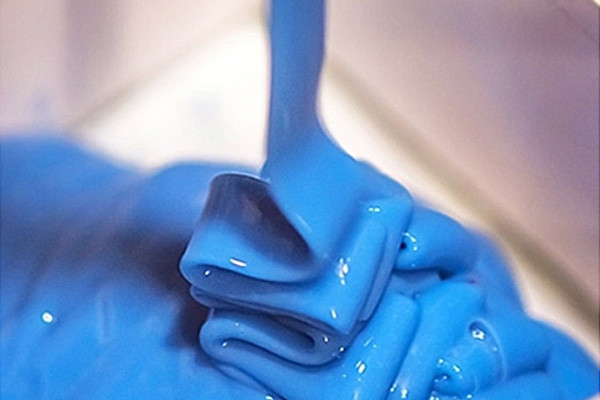
- Good Drainage: Effective drainage is crucial to prevent waterlogging and root rot. A potting material with adequate drainage allows excess water to flow freely through the soil, ensuring that plant roots do not become waterlogged. Materials such as perlite, sand, and gravel help facilitate drainage by creating air pockets within the soil.
- Aeration: Plants require oxygen at their roots for respiration. A potting material that allows for adequate aeration ensures oxygen can reach the root zone. Components like perlite, vermiculite, and coarse organic matter help maintain soil structure and porosity, allowing for sufficient airflow to the roots.
- Moisture Retention: While good drainage is essential, the potting material should retain enough moisture to keep the roots hydrated between waterings. Materials like peat moss, coconut coir, and compost help retain moisture in the soil while allowing excess water to drain away, balancing drainage and moisture retention.
- Nutrient Availability: Potting materials should provide a medium for nutrient uptake by plant roots. Organic components like compost and aged manure contribute essential nutrients to the soil as they decompose. Additionally, adding slow-release fertilizers or incorporating nutrient-rich amendments can help ensure a steady supply of nutrients for plant growth.
- pH Balance: The pH level of the potting material should be within the optimal range for the specific plants being grown. Most plants prefer a slightly acidic to neutral pH range. Materials like peat moss and pine bark tend to lower the pH of the soil, making them suitable for acid-loving plants, while lime can be added to raise the pH for plants that prefer alkaline conditions.
- Sterility: Potting materials should be free from pathogens, pests, and weed seeds that could harm plant health. Sterilizing the potting mix or using commercially prepared sterile mixes can help prevent the introduction of unwanted organisms into the garden.
By selecting a potting material that exhibits these characteristics, gardeners can create an optimal plant-growing environment, leading to healthier growth, improved yields, and overall gardening success.
Can potting material affect water drainage in plant containers?
Yes, potting material significantly influences water drainage in plant containers. The choice of potting material determines how well water can move through the soil and drain from the container, directly impacting the health and growth of the plants.
Firstly, the texture and composition of the potting material play a crucial role. Soilless mixtures, such as peat moss, coconut coir, and perlite, are often used in potting mixes because they are lightweight and have excellent drainage properties. These materials allow water to pass through easily, preventing waterlogging and providing adequate aeration to plant roots.
On the other hand, heavy soils like clay can compact easily, leading to poor drainage and suffocation of plant roots. Similarly, using dense materials such as sand alone can result in water pooling at the bottom of the container, creating a risk of root rot.
Furthermore, the particle size of the potting material influences drainage. Finer particles tend to compact more efficiently, reducing drainage capacity. Coarser materials like perlite and gravel improve drainage by creating larger pore spaces in the soil, allowing water to flow freely.
Additionally, the structure of the potting mix affects drainage. Well-structured soils with a good balance of organic matter and mineral components promote optimal drainage. Organic matter improves soil structure, preventing compaction and enhancing water movement, while mineral components like sand or perlite aid in creating pore spaces for drainage.
Moreover, the depth of the potting material in the container also impacts drainage. Adequate depth allows for proper root development and water drainage. Shallow containers with insufficient potting material may lead to water pooling around the roots, increasing the risk of root diseases.
Potting material significantly affects water drainage in plant containers. Choosing the right combination of materials, considering texture, composition, particle size, and structure, is essential for maintaining proper drainage and ensuring the health and vitality of container plants.
How does the pH level of potting material influence plant health?
The pH level of potting material plays a crucial role in plant health as it directly affects nutrient availability, microbial activity, and overall soil chemistry. pH, which measures the acidity or alkalinity of the soil, influences the solubility and uptake of essential nutrients by plant roots.
Optimal pH levels for most plants typically range between 6.0 and 7.5, although specific species may have slightly different preferences. When the pH deviates from this range, it can lead to nutrient deficiencies or toxicities, stunting growth and compromising plant health.
At a lower pH (acidic conditions), essential nutrients like phosphorus, potassium, and calcium may become less available to plants. Additionally, aluminum and manganese toxicity can hinder root development and nutrient uptake. Acidic conditions can also increase the solubility of heavy metals, posing further risks to plant health.
Conversely, in alkaline soils (higher pH), micronutrients such as iron, zinc, and manganese may become less accessible to plants, leading to deficiencies. Alkaline conditions can also inhibit the uptake of phosphorus, an essential nutrient for plant growth and development.
Moreover, pH influences microbial activity in the soil. Many beneficial microorganisms responsible for nutrient cycling and disease suppression thrive in neutral to slightly acidic conditions. Extreme pH levels can disrupt the balance of soil microbiota, affecting nutrient availability and plant-microbe interactions essential for plant health.
To manage pH levels in potting material, gardeners often use amendments like lime to raise pH in acidic soils or sulfur to lower pH in alkaline soils. Regular pH monitoring through soil testing allows gardeners to adjust pH levels as needed, ensuring optimal conditions for plant growth.
The pH level of potting material significantly influences plant health by affecting nutrient availability, microbial activity, and soil chemistry. Maintaining the appropriate pH range is essential for optimizing nutrient uptake, promoting healthy root growth, and supporting overall plant vigor and productivity.
Are there organic alternatives to conventional potting material?
Yes, there are several organic alternatives to conventional potting materials, often used by environmentally-conscious gardeners or those seeking to reduce their reliance on synthetic products. These alternatives offer various benefits, including sustainability, biodegradability, and often improved soil health. Here are some options:
- Coconut Coir: Coir is a natural fiber extracted from the husk of coconuts. It’s an excellent alternative to peat moss, commonly used in potting mixes but not sustainable. Coir is renewable, retains moisture well, and has good drainage properties.
- Compost: Compost can be used as a potting medium or mixed with other materials to create a nutrient-rich soil blend. It’s made from decomposed organic matter, such as kitchen scraps, yard waste, and manure. Compost improves soil structure, fertility, and microbial activity.
- Rice Hulls: Rice hulls are the outer protective covering of rice grains. They’re lightweight, renewable, and provide good aeration to soil mixes. Rice hulls also decompose slowly, adding organic matter to the soil over time.
- Sphagnum Moss: Sphagnum moss is an excellent alternative to peat moss for retaining moisture in potting mixes. It’s sustainably harvested from bogs and wetlands and can be used alone or mixed with other materials like compost or coconut coir.
- Leaf Mold: Leaf mold is created by decomposing leaves over time. It’s rich in nutrients and beneficial microorganisms, making it a great addition to potting mixes or as a soil amendment. Leaf mold improves soil structure, water retention, and microbial activity.
- Wood Chips or Bark: Finely shredded wood chips or bark can be used in potting mixes to improve drainage and aeration. They also slowly decompose, adding organic matter to the soil.
- Pine Needles: Pine needles can be used as mulch or mixed into potting mixes to increase acidity and improve soil structure. They decompose slowly and add organic matter to the soil.
These organic alternatives provide sustainable options for potting materials and promote soil health and fertility. Gardeners can experiment with combinations to create customized potting mixes suited to their plants and growing conditions.
What are some common additives found in potting material?
Potting materials often contain various additives to improve soil structure, enhance water retention, promote root growth, and provide nutrients to plants. These organic or synthetic additives are commonly found in commercial potting mixes. Here are some common additives:
- Perlite: Perlite is a lightweight volcanic mineral often added to potting mixes to improve drainage and aeration. It helps prevent soil compaction, allowing roots to access oxygen more efficiently.
- Vermiculite: Vermiculite is a mineral that undergoes a process of heating and expanding. It improves soil aeration and water retention, helping to maintain moisture levels in the root zone.
- Peat Moss: Peat moss is a partially decomposed organic material harvested from bogs. It’s commonly used in potting mixes to retain moisture and provide aeration. However, its sustainability is a concern, leading many gardeners to seek alternatives like coconut coir.
- Compost: Compost is rich in organic matter and nutrients, making it a valuable additive in potting mixes. It improves soil structure, fertility, and microbial activity, promoting healthy plant growth.
- Worm Castings: Worm castings, also known as vermicompost, are the excrement of earthworms. They’re rich in nutrients and beneficial microorganisms, making them an excellent additive for potting mixes to promote plant growth and soil health.
- Sand is added to potting mixes to improve drainage and prevent soil compaction. It helps create a loose, well-draining soil structure ideal for many plants.
- Fertilizers: Potting mixes may contain synthetic or organic fertilizers to provide essential nutrients to plants. These fertilizers can be slow-release or water-soluble, depending on the needs of the plants being grown.
- Lime: Lime is sometimes added to potting mixes to adjust soil pH levels. It helps neutralize acidity and create a more balanced growing environment for plants.
- Mycorrhizae: Some potting mixes contain beneficial fungi called mycorrhizae, which form symbiotic relationships with plant roots. Mycorrhizae help improve nutrient uptake and enhance plant resilience to stress.
These additives are essential in creating balanced potting mixes that provide optimal plant growth conditions. Gardeners can select mixes with specific additives based on their plants’ needs and growing conditions.
How long does potting material typically last?
The lifespan of potting material depends on various factors such as the type of material used, environmental conditions, plant species, and maintenance practices. Generally, potting material can last anywhere from a few months to several years. Here’s a breakdown of the typical lifespan of different types of potting materials:
- Peat-based mixes: Potting mixes containing peat moss as a primary component typically last for one to two years before breaking down and losing their structure. Peat moss decomposes relatively slowly, but it can become compacted over time, affecting drainage and aeration.
- Coconut coir: Coconut coir is more durable than peat moss and can last two to five years in a potting mix. It retains its structure and moisture-retention capabilities for an extended period, making it a popular alternative to peat moss.
- Vermiculite and perlite: Vermiculite and perlite are lightweight additives that improve drainage and aeration in potting mixes. They do not decompose and can last indefinitely if properly maintained. However, they may need to be replaced if they become compacted or contaminated with soil and organic matter.
- Compost: Compost is rich in organic matter and nutrients, but its lifespan in a potting mix depends on its decomposition rate. Well-aged compost can last several years, providing ongoing benefits to plant growth and soil health. However, fresh compost may decompose quickly and must be replenished more frequently.
- Synthetic additives: Synthetic additives such as fertilizers, slow-release nutrients, and water-absorbing polymers can last for varying lengths, depending on their chemical composition and environmental conditions. Some may provide nutrients or moisture-retention benefits for several months or even years before needing to be reapplied.
Overall, the lifespan of potting material can be extended through proper maintenance practices such as regular watering, fertilizing, and repotting as needed. Monitoring the condition of the potting mix and observing any signs of deterioration can help gardeners determine when it’s time to replace or replenish the material to ensure healthy plant growth.
What innovations are shaping the future of potting material?
The future of potting materials is being shaped by several innovative approaches to enhance sustainability, improve plant health, and reduce environmental impact. Here are some key innovations that are shaping the future of potting materials:
- Biodegradable and compostable materials: There is a growing emphasis on developing potting materials that are biodegradable and compostable, reducing the environmental impact of traditional plastic pots and containers. Bioplastics made from renewable sources such as corn starch or sugarcane are being explored as alternatives to conventional plastics, providing a sustainable option for potting containers.
- Innovative materials: Advances in material science are leading to the development of “smart” potting materials embedded with sensors or responsive properties. These materials can monitor soil moisture levels, nutrient content, and other environmental factors, providing real-time data to optimize watering and fertilization practices. Innovative materials can help reduce water usage, minimize nutrient runoff, and improve plant health.
- Hydrogels and water-absorbing polymers: Hydrogels and water-absorbing polymers are incorporated into potting mixes to improve water retention and reduce watering frequency. These materials absorb and release water as needed, helping to maintain optimal moisture levels in the root zone and reducing water waste.
- Nanotechnology: Nanotechnology is applied to develop potting materials with enhanced properties such as improved water retention, nutrient delivery, and disease resistance. Nanoparticles can be incorporated into potting mixes to regulate soil moisture, slowly release nutrients, and enhance plant growth.
- Recycled and upcycled materials: Recycling and upcycling waste materials into potting materials offer a sustainable solution to reduce landfill waste and conserve resources. For example, recycled paper, cardboard, and agricultural waste such as rice husks or coconut shells can be processed into biodegradable pots, mulch, or compostable potting mixes.
- Biochar: Biochar, a charcoal produced from organic waste materials, is gaining attention for improving soil fertility, water retention, and nutrient cycling. Incorporating biochar into potting mixes can enhance soil structure, promote beneficial microbial activity, and sequester carbon in the soil.
These innovations represent exciting opportunities to revolutionize how potting materials are produced and used, creating more sustainable and environmentally friendly solutions for gardeners and growers. By harnessing the latest advancements in materials science, agriculture, and environmental technology, the future of potting materials holds great promise for improving plant health, conserving resources, and mitigating the impacts of climate change.
Conclusion:
In conclusion, potting material is significant across various industries, serving as a protective and nurturing agent for electronics and plants alike. As technology advances and environmental concerns grow, the evolution of potting material continues, promising more sustainable and efficient solutions in the future. Understanding its composition, applications, and importance is essential for optimizing its use in diverse fields.
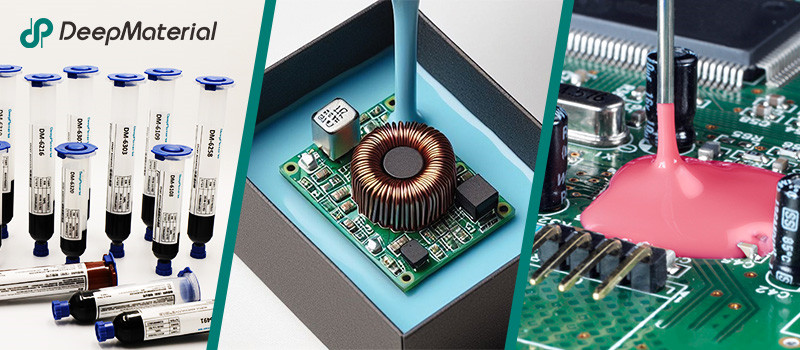
About DeepMaterial
DeepMaterial is a trusted supplier of encapsulant materials that are used in electronics manufacturing worldwide. From chip on board encapsulants such as glob top material to conformal coatings, underfills, low pressure molding, and potting solutions, DeepMaterial offers a full range of circuit board protection materials that effectively protect circuit boards while help reduce costs. More…Deepmaterial is a the manufacturer of epoxy adhesives including hardeners, metalbond, and metal filled resins. Structural, toughened medium viscosity, and non-sag adhesives are also offered. Some adhesives are resistant to thermal shock, chemical, vibration dampening, and impact. Suitable for metals, plastics, wood, and ceramics. Serves electronics, aerospace, automotive, tooling, marine, and construction industries. REACH and RoHS compliant. FDA approved. UL listed. Meets military specifications. We are the one of best adhesive manufacturers in China.
Blogs & News
Potting compounds are at the frontline of electronics assembly, delivering effective protection in challenging environmental conditions while improving mechanical strength and offering high electric insulation. Used within a variety of industries, electrical potting compounds are found within a broad range of consumer electronics, as well as used in applications across the automotive, aerospace, and other industries where electronic assemblies are prevalent.
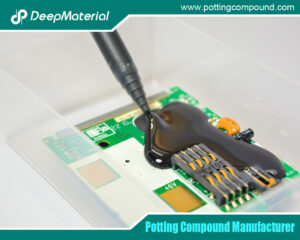
The Potting and Encapsulating Compounds Market: An In-Depth Exploration of Trends, Innovations, and Future Prospects
The Potting and Encapsulating Compounds Market: An In-Depth Exploration of Trends, Innovations, and Future Prospects In the rapidly evolving technology landscape, the potting and
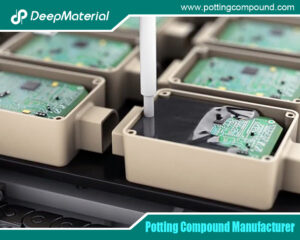
The Comprehensive Guide to Polyurethane Potting Compound Manufacturers
The Comprehensive Guide to Polyurethane Potting Compound Manufacturers In today’s rapidly advancing technological landscape, the protection and reliability of electronic components have become paramount.
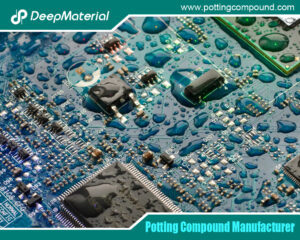
The Comprehensive Guide to Epoxy Potting Compound Manufacturers
The Comprehensive Guide to Epoxy Potting Compound Manufacturers Epoxy potting compounds are essential materials in the electronics industry, providing robust protection for sensitive components against
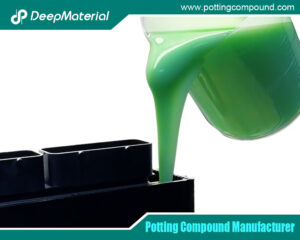
The Essential Guide to Potting Materials for Electronics
The Essential Guide to Potting Materials for Electronics In the rapidly evolving field of electronics, ensuring device reliability and longevity is critical. One of the
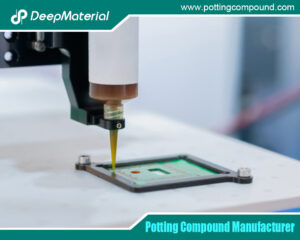
The Expanding Horizon of the Mini Silicone Optical Glue Market
The Expanding Horizon of the Mini Silicone Optical Glue Market The mini silicone optical glue market is witnessing unprecedented growth, fueled by technological advancements and
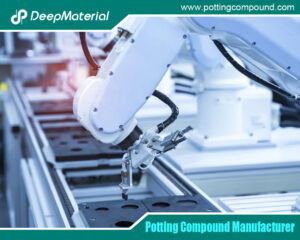
The Comprehensive Guide to PCB Potting Services: Ensuring Reliability in Electronics
The Comprehensive Guide to PCB Potting Services: Ensuring Reliability in Electronics Printed Circuit Boards (PCBs) are the backbone of modern electronics, enabling functionality in

